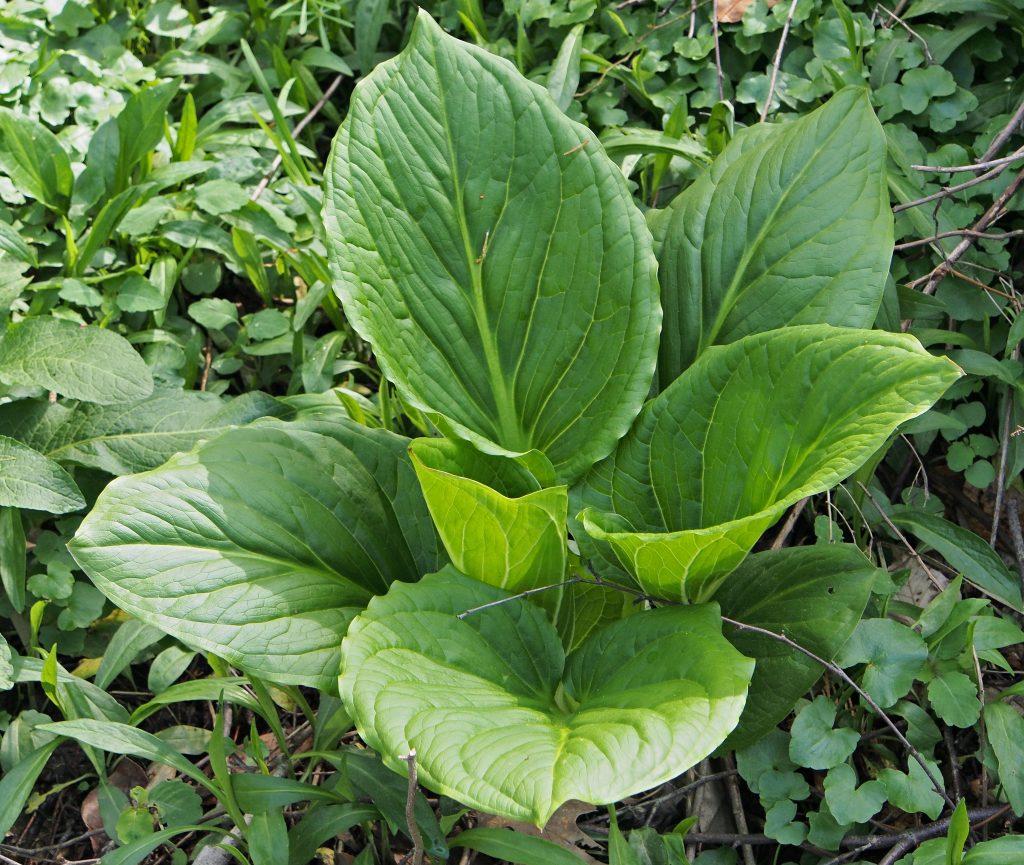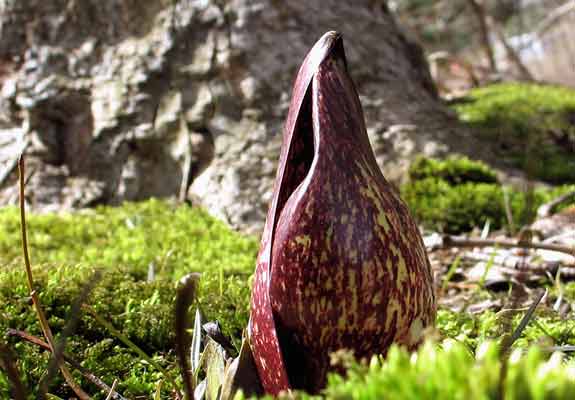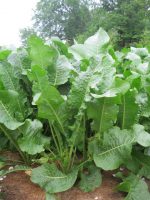
Also known as swamp cabbage, clumpfoot cabbage, foetid pothos and polecat weed, this herbaceous perennial is native to wetlands and moist slopes of eastern North America. It is a member of the arum family, Araceae, that also includes peace lily, jack in the pulpit, and caladium. In early spring before the leaves emerge, small flowers are produced on a 2″ long, knob-like, pale yellow to dark purple structure called a spadix. Around the spadix is a a large brownish-purple and green, mottled, shell-like spathe. The flowers can produce heat so that the spathe and spadix can emerge through snow cover. After fertilization the flowers and spadix produce a compound fruit 4″ long and 3″ across. After the flowering, a basal rosette of large leaves emerges, grows to about 2-3′ by early summer, and then dies by late summer. The leaves are oval and dark green with conspicuous venation that give them a quilted look. The flowers and bruised leaves emit an unpleasant skunk like odor that attracts pollinators and may deter larger animals that might eat or damage the plant. The root system consists of an elongated root up to 1″ long surrounded by a mass of thick fibrous roots. The root and the unfurled leaves are edible with no unpleasant taste or odor after cooking. Skunk cabbage is a good choice for native plant, wetland, and woodland gardens as well as a plant zoo. The genus name, Symplocarpus, comes from the Greek words symploke, meaning connection, and karpos, meaning fruit, and refers to the ovaries growing together to form a single fruit. The specific epithet, foetidus, comes from the Latin word fetere, meaning to have a bad smell, and refers to the odor of the flowers and leaves. Photo Credit Wikimedia Commons
Type: Herbaceous perennial

Height: 2-3′
Bloom: Small flowers on a spadix in early spring
Light: Part sun to light shade
Soil: Humusy, consistently wet
Hardiness: Zones 4-7
Pests and Diseases: None of significance
Propagation: Seed (selfseeds); does not transplant well
Companion Plants: Sedges, jewelweed, marsh marigold
Outstanding Selections: None available
Photo Credit Wikipedia
